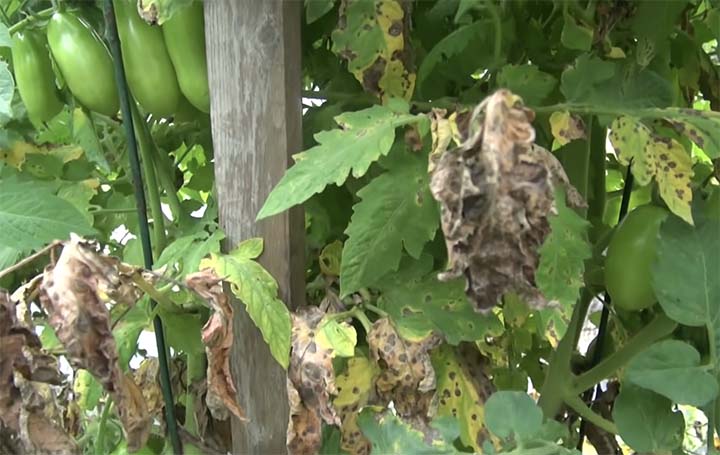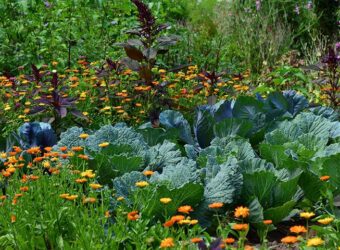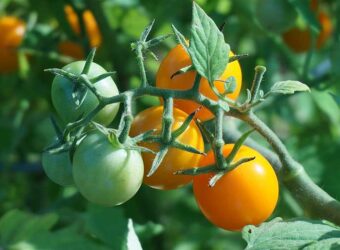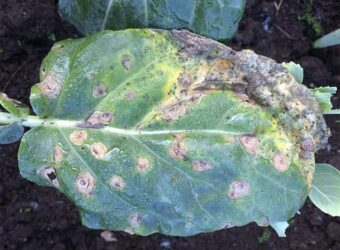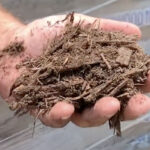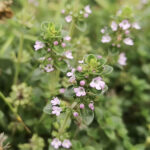Tomatoes are a popular vegetable to grow at home. Occasionally, tomato plants have problems.
This guide will talk about what causes brown leaves on tomatoes, what to do about it, and how to prevent brown leaves.
Top 9 Reasons My Tomato Leaves Turning Brown
There are many reasons the leaves on a tomato plant will turn brown. These problems can attack container tomato plants, regular-sized and cherry tomatoes, seedlings, and larger plants. Here are the most common causes.
Early Blight (Alternaria linariae)
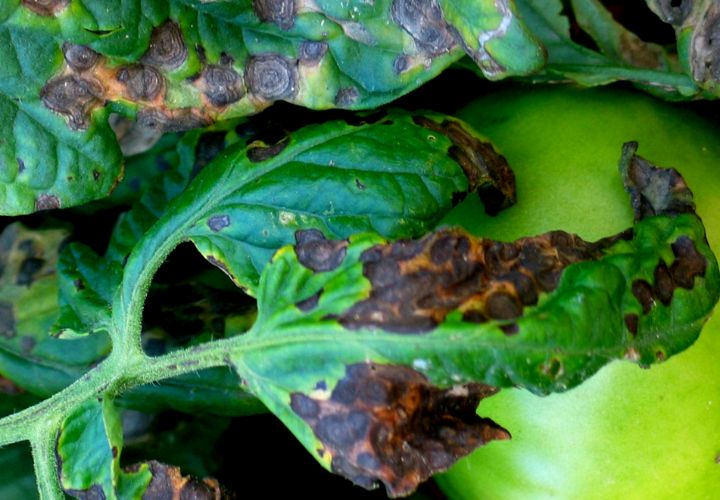
Early blight causes small brown lesions on the leaves and stems that sometimes look like a bullseye. The lesions on the fruit spread rapidly. The older leaves are typically attacked first. The areas around the lesions turn yellow, and the leaves die. High temperature and high humidity make early blight worse, and the tomato plant will rapidly defoliate and die.
Late Blight (Phytophthora infestans)
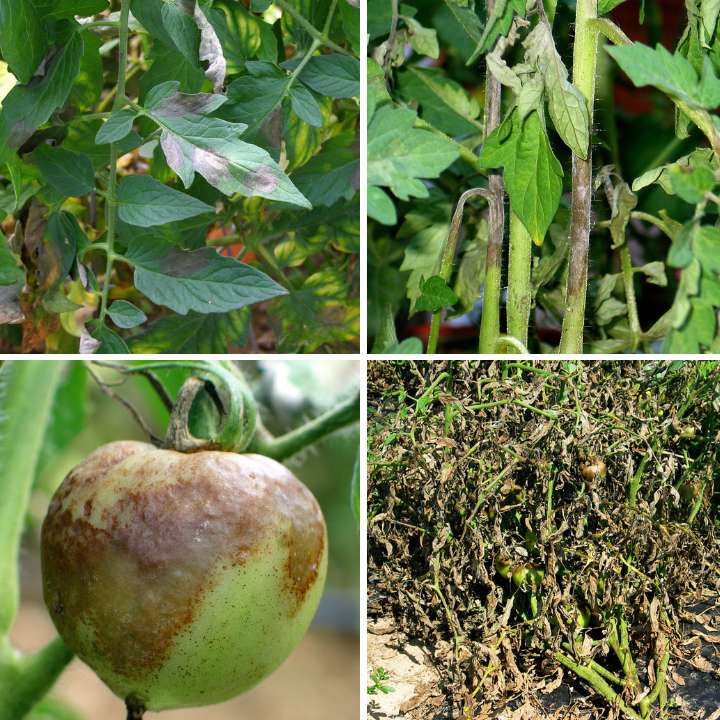
Late blight shows as small water-soaked lesions on leaves. The lesions spread rapidly and get a white mold on them. The tomato plant’s leaves and stem rapidly turn brown and dry up, and the plant dies.
Septoria Leaf Spot (Septoria lycopersici)
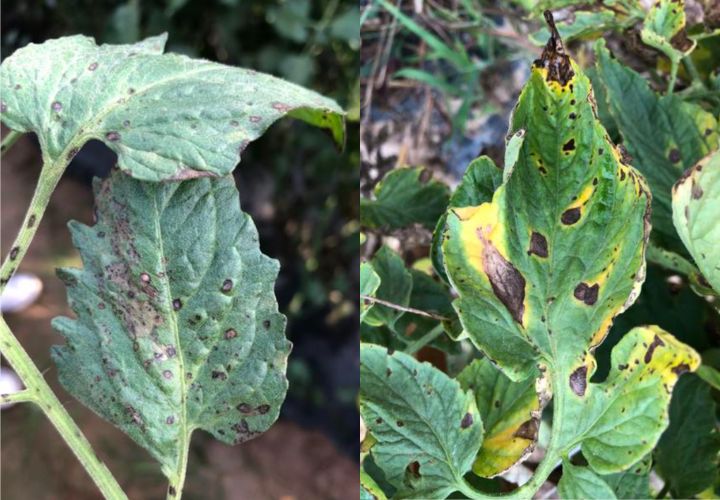
Septoria leaf spot causes tan spots on the leaves. The leaves nearest the ground are usually the first affected. They rapidly turn yellow and fall off the plant. This disease is worse when the temperature is 68 to 77° F, the humidity is high, and the leaves are wet due to rainfall or overhead irrigation.
Bacterial Spot (Xanthomonas)
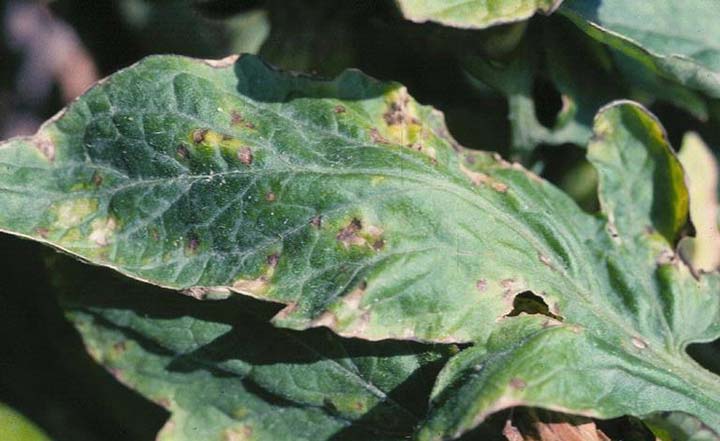
Bacterial spot starts as small water-soaked spots on the leaves that widen and turn brown. The edges of the leaves are often brown and curled. The area around the leaf spots may turn yellow. The spots may dry out and tear, leaving holes in the leaves.
Bacterial Canker
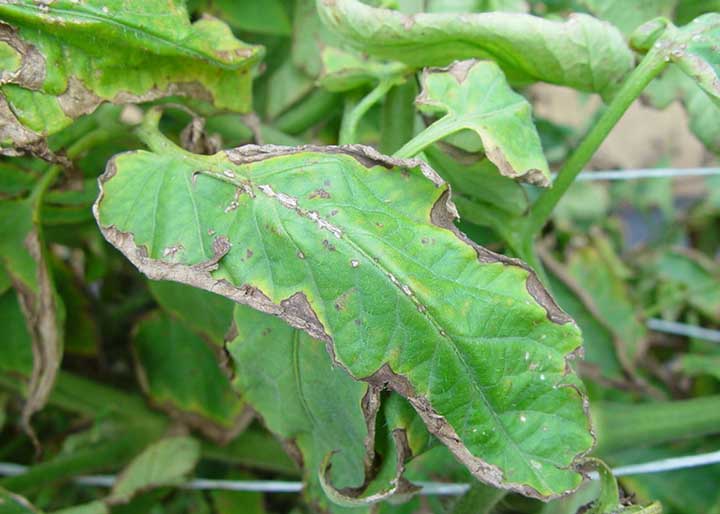
With bacterial canker, the lower leaves turn downward and develop dark or light brown streaks on the midribs. These brown streaks eventually travel to the petiole, where the leaf attaches to the stem, and onto the stem. A canker forms on the stem. The fruit gets small, white, scabby, raised lesions on it.
Verticillium Wilt
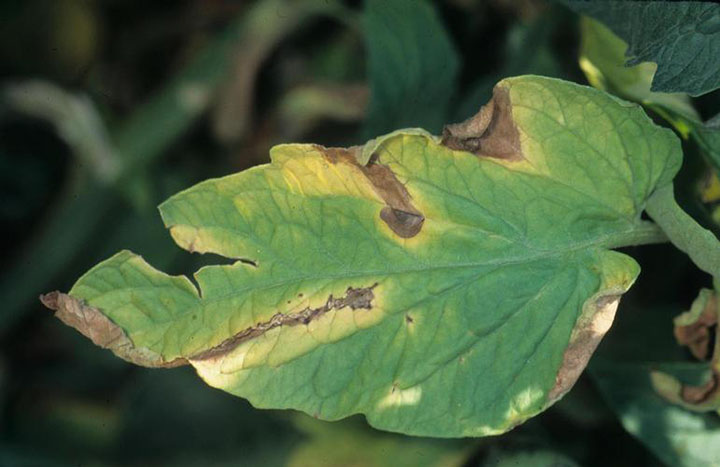
Verticillium wilt appears on leaves as a yellow V shape. The leaves go from yellow to brown and die. The older leaves are affected first.
Drought
If a tomato plant does not get enough water, the leaves will turn brown at the leaf tips. The leaves may also have brown edges. Eventually, the leaves become crunchy and drop off.
Fertilizer Damage
An excess of fertilizer can cause the tips and edges of leaves to turn brown, and sometimes they curl inward. If the fertilizer is too strong, the leaves will turn brown and crunchy all over and fall off the tree. You can consult my article about tomato fertilizer here.
Tomato spotted wilt/impatiens necrotic spot tospoviruses (Tomato spotted wilt virus)
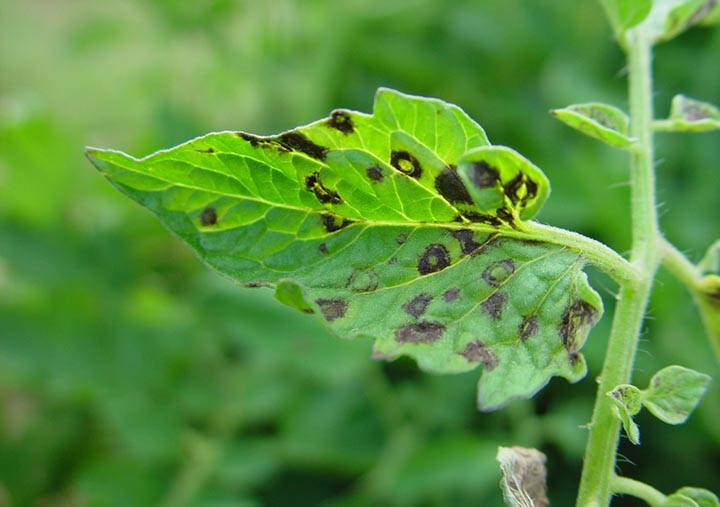
This disease is spread by thrips. The younger leaves may suddenly have bronze or dark spots on them and become twisted or malformed. The fruit is deformed and won’t fully ripen. Once a tomato plant gets this disease, it will die.
Treatment for Brown Leaves on Tomato Plants
The way to treat tomato plants that have brown leaves depends on the cause. Most diseases can be controlled with a copper fungicide. Copper fungicides may be allowed in organic production, so check the label to see if that product is organic. There is no treatment for viruses or for bacterial cankers, or verticillium wilt. Remove these plants and throw them away in the trash. Never compost a sick plant.
Drought and fertilizer damage both call for more water. Keep your tomatoes evenly moist with about an inch of water a week. If you fertilize and start seeing brown tips and leaf edges, flush the soil with lots of water to wash the fertilizer away.
Preventing Brown Leaves
All tomato diseases have the same preventative measures. Here are the best practices to keep from having tomato problems.
- Plant tomato plants that are resistant to diseases in your area. The letters after the tomato name list what diseases the tomato plant can resist. If you want to grow heirloom tomatoes, consider grafting them onto disease-resistant rootstock.
- At the end of the season, remove all plants, leaves, and other organic debris from your garden. Pests and diseases often overwinter in organic matter.
- Purchase certified disease-free plants and seeds. Don’t introduce unknown plants into your garden because they may carry diseases.
- Do not compost rotten store-bought tomatoes because they may introduce a disease into your compost pile. When you use the compost, you spread the disease into your garden.
- Allow adequate space for your tomato plants. There should be at least two feet between determinate plants and three feet between indeterminate plants.
- Water your tomato plants with around one inch of water a week. Your goal is to keep the soil evenly moist but not soggy. An inexpensive moisture meter can help you achieve this.
- Be careful with your fertilizer. Choose a fertilizer formulated for tomatoes. Follow the directions on the label as to how much fertilizer to leave. More is not better.
- Rotate your crops. Do not grow peppers, tomatoes, potatoes, and other crops in that family where you have grown a crop from the same family for two years.
- Do not get the leaves, stems, or fruit wet when you are watering. Wet leaves get diseases. Use drip irrigation or a soaker hose to apply water to the roots, not on the foliage.
- Mulch around the tomato plant with three inches of mulch. Do not let the mulch touch the stem. Mulch helps keep fungal diseases from splashing up on leaves when you water.
- Keep weeds under control. They attract thrips and other pests, which can spread viruses to your tomato plants.
In conclusion, there are a number of diseases that can cause brown leaves along with drought or fertilizer burn. Treating susceptible diseases with a copper fungicide will keep them under control. If the diseases have no treatment, remove the plants as soon as possible and put them in the trash. Do not compost sick plants. Crop rotation, planting resistant varieties, sanitation, mulching, and watering without getting the leaves or stems wet is the best way to prevent problems in your tomato plants.
